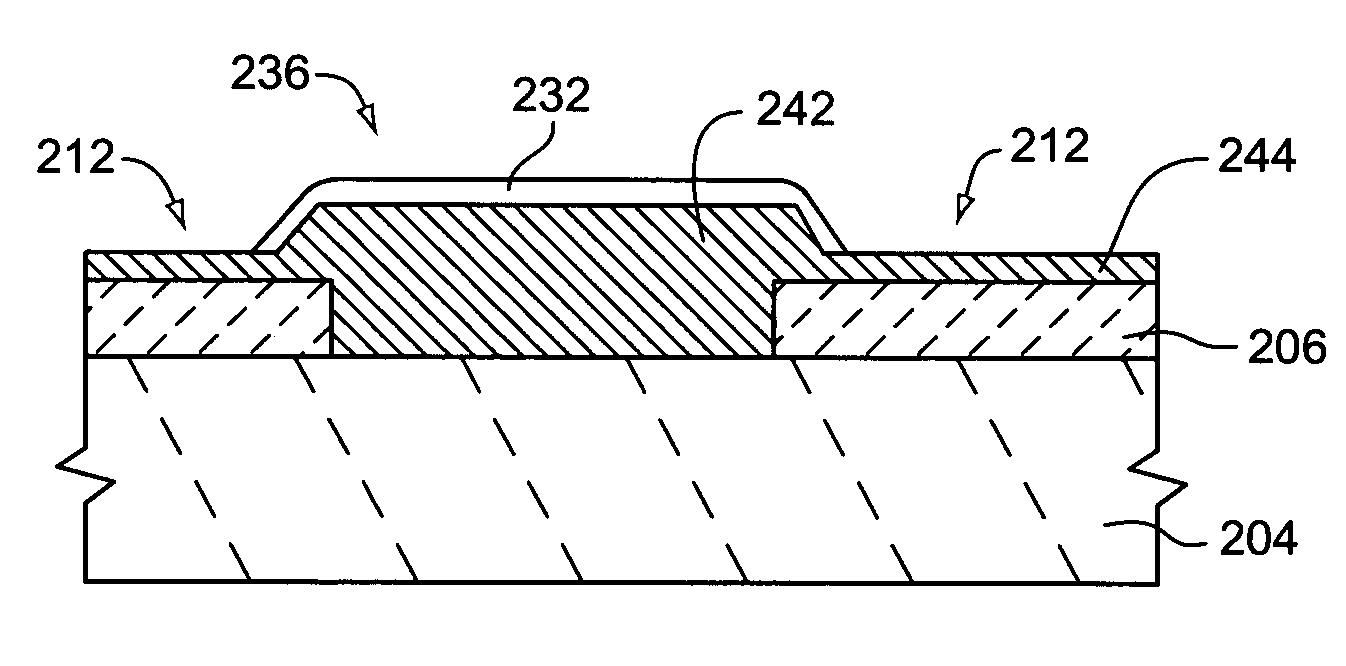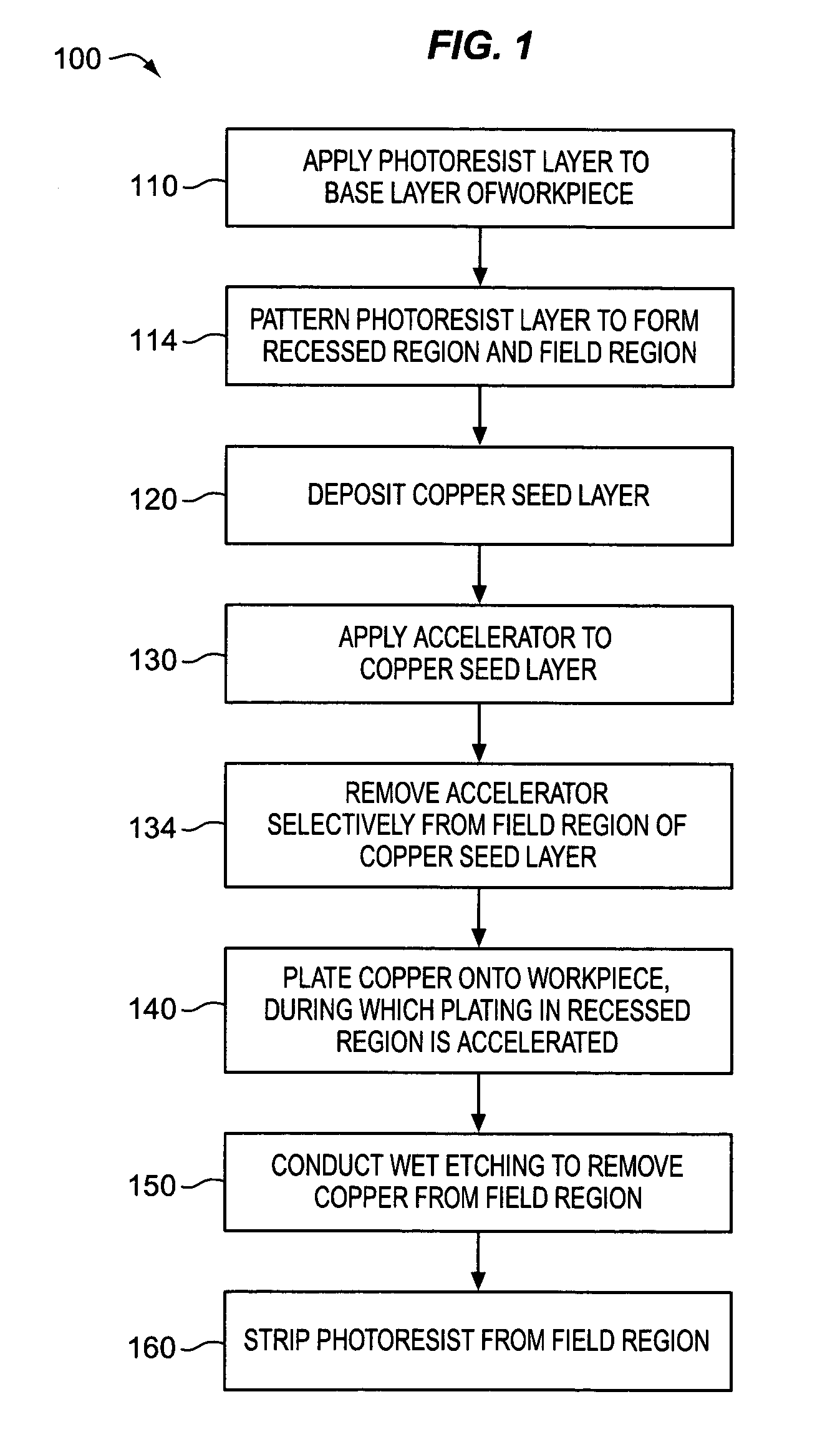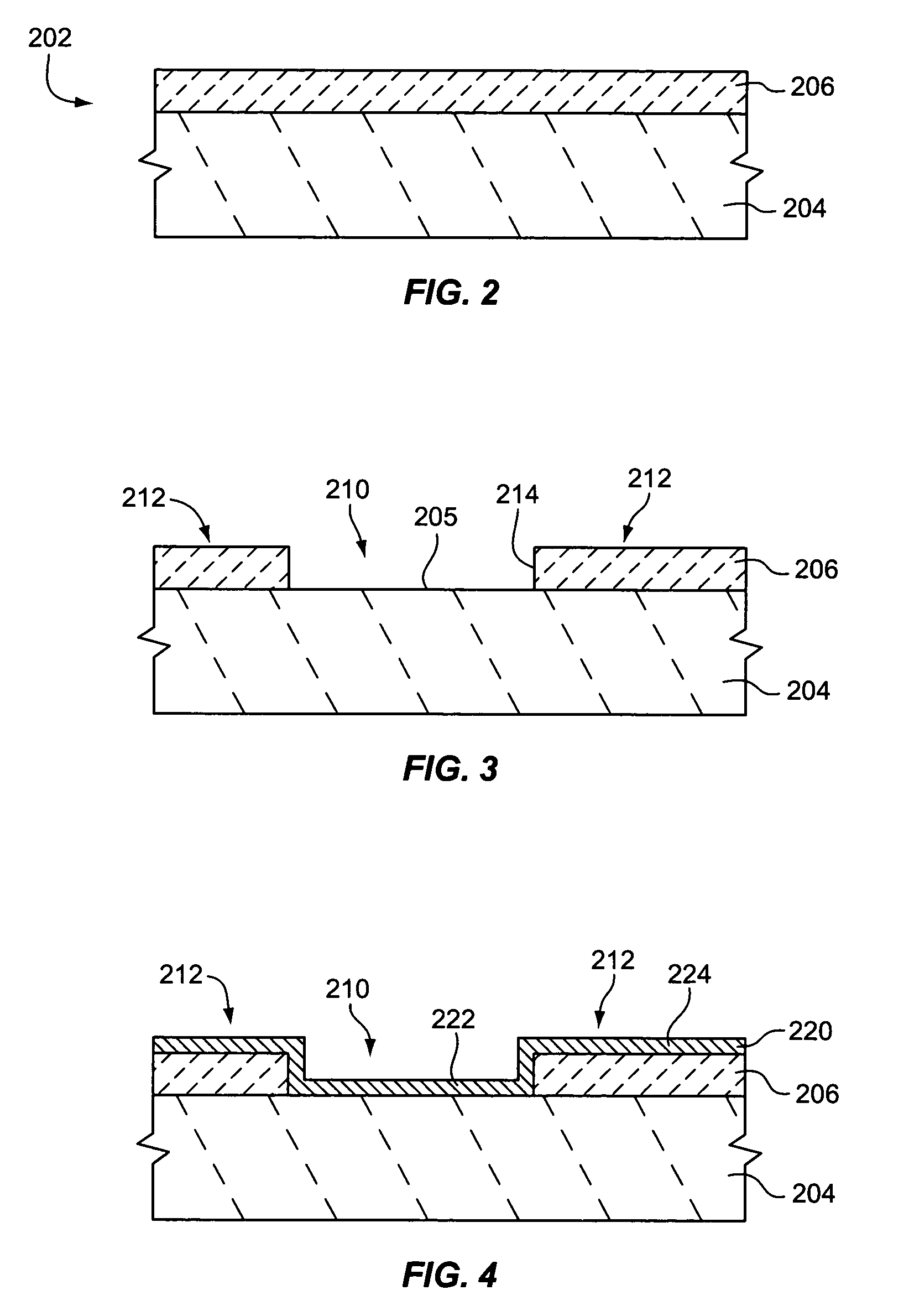Selectively accelerated plating of metal features
a technology of metal features and etching baths, applied in the direction of printed circuits, electrical equipment, printed circuit manufacturing, etc., can solve the problems of reducing the life pwb production is acutely price sensitive, and the etching solution is contaminated with copper, so as to reduce or eliminate the exposure of the plating bath, the effect of increasing the use reducing the exposure of the etching bath
- Summary
- Abstract
- Description
- Claims
- Application Information
AI Technical Summary
Benefits of technology
Problems solved by technology
Method used
Image
Examples
example 1
[0056]It has been found that simply exposing the surface of a workpiece to certain accelerators like 2-mercaptoethane sulfonic acid (MESA) or 3-mercapto-1-propane sulfonic acid (MPSA) activates the surface. FIG. 14 shows a voltammetric plot (current density versus potential for the treated electrode) for substrates exposed to the accelerator MPSA for different exposure times. A copper rod rotating at 800 rpm was dipped in a solution containing the accelerator MPSA in deionized (DI) water for various exposure times and concentrations, then triple rinsed with DI water and plated in a solution of copper sulfate (40 g / l Cu+2), sulfuric acid (30 g / L), chloride ion (50 ppm) and the suppressor Pluronic L-92 (a copolymer of polypropylene oxide and polyethylene oxide, 0.1 g / L)). Between each voltage scan, the surface was electropolished in phosphoric acid and rinsed in water to achieve a reproducible, highly microscopically smooth surface and remove any previously adsorbed accelerator. A cle...
example 2
[0070]A technique was developed that is useful in measuring the effectiveness and rate of accelerator film (adsorbate) removal. The technique involves comparing the electroplating response of accelerator-activated wafers, non-activated wafers, and wafers activated and rubbed (under various process conditions) in a plating bath. Non-featured 200 mm wafers containing a plasma vapor deposited (PVD) metal seed layer (125 nm Cu over 30 nm Ta) were used. A non-activated wafer was plated in a Novellus Systems Sabre™ plating tool, using a plating solution containing 35 g / L copper ion, 40 g / L sulfuric acid, 50 ppm chloride ion, and 0.2 g / L Pluronic L-62, and containing no accelerators or levelers. The wafer was plated for 300 seconds at constant potential (i.e., at 0.70 V relative to a Hg / HgSO4 reference electrode). The reference electrode was ionically connected to the cell using the so-called Luggin-Haber capillary (see A. Bard and L. Faulkner, Electrochemical Methods: Fundamentals and App...
PUM
| Property | Measurement | Unit |
|---|---|---|
| height | aaaaa | aaaaa |
| thickness | aaaaa | aaaaa |
| thick | aaaaa | aaaaa |
Abstract
Description
Claims
Application Information
 Login to View More
Login to View More - Generate Ideas
- Intellectual Property
- Life Sciences
- Materials
- Tech Scout
- Unparalleled Data Quality
- Higher Quality Content
- 60% Fewer Hallucinations
Browse by: Latest US Patents, China's latest patents, Technical Efficacy Thesaurus, Application Domain, Technology Topic, Popular Technical Reports.
© 2025 PatSnap. All rights reserved.Legal|Privacy policy|Modern Slavery Act Transparency Statement|Sitemap|About US| Contact US: help@patsnap.com



